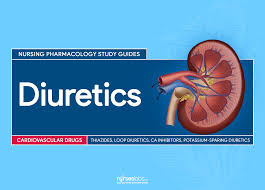Acute Gout
The sudden onset of excruciating pain associated with inflammatory arthritis brought on by the buildup of uric acid crystals in one or more joints is known as acute gout. This disease is an indication of gout, a type of arthritis marked by high blood uric acid levels that cause needle-like crystals to form in the joints.
Swollen, red, warm to the touch, and extremely sensitive joints that produce excruciating pain are the symptoms of an acute gout attack. Although gout can affect other joints as well, including the ankles, knees, elbows, wrists, and fingers, it most commonly affects the big toe.
Alcohol consumption, stress, illnesses, and dietary choices (purine-rich foods) are some of the factors that can cause the acute phase of gout to occur suddenly. Acute gout can cause crippling pain and inflammation that frequently need to be treated right away by a physician. Modifications to lifestyle, medications to lower blood levels of uric acid to prevent future attacks, and medications to reduce inflammation and pain are all effective management strategies.
Signs and symptoms
The symptoms of acute gout are sudden and severe, usually affecting one or more joints. The following are the most typical signs of acute gout:
Severe Joint Pain:
The sudden onset of severe pain, frequently described as throbbing or excruciating, is the hallmark symptom of acute gout. The joint at the base of the big toe is where the pain is usually felt, but it can also affect the ankles, knees, elbows, wrists, and fingers.
Swelling:
The afflicted joint swells and becomes noticeably bigger than usual. The fluid buildup and inflammation brought on by the uric acid crystals are the causes of the swelling.
Redness and Warmth:
The skin over the involved joint may become swollwen red and hot to the touch. This is a consequence of the body's immune response to the presence of uric acid substances as crystals in the body.
Limited Range of Movement:
Reduced range of motion in the afflicted joint can result from the acute gout's pain and swelling due to tender joint.
Tenderness:
The affected joint is extremely painful, and even the soft touch or applying a light pressure can cause inmmense pain.
Distress During Rest:
Even when the patient is at rest, acute gout can cause pain and discomfort. During an acute episode, this may have an impact on sleep and general quality of life.
Symptoms Resolving:
The frequency and intensity of acute gout attacks can differ from person to person, but they usually go away on their own in a matter of days to a few weeks.
Causes of Acute Gout
It's important to remember that not everyone with elevated serum uric acid levels will experience acute gout; in fact, some people may only experience extremely infrequent attacks. It is a good idea to see your doctor for a proper diagnosis and treatment if you suspect that you have gout or experience symptoms associated with acute gout.
A condition called hyperuricemia, or an excess of uric acid in the body, is the cause of acute gout. Purines, which are present in both the body and the food you eat, are broken down by the body to produce uric acid. Uric acid crystals can accumulate in the body's tissues, fluids, and joints when there is an excessive amount of uric acid present. The sudden and severe attacks of pain, swelling, redness, and tenderness associated with acute gout are caused by this buildup of uric acid crystals in the joints and surrounding tissues.
Gout is caused by hyperuricemia, which can be brought on by a number of factors, including being male, being obese, having certain medical conditions (such as insulin resistance, metabolic syndrome, hypertension, and poor kidney function), using certain medications (like diuretics), and drinking alcohol.
- Diuretics, which are frequently prescribed for ailments like hypertension (high blood pressure), can cause the kidneys to excrete less uric acid, which raises the uric acid levels in the blood
Aspirin taken in large amounts can sometimes exacerbate gout attacks by interfering with the excretion of uric acid. For the treatment of gout, aspirin at low doses is generally regarded as safe.
Cyclosporine is an immunosuppressive medication that is given to organ transplant recipients; it can raise uric acid levels and cause gout.
Niacin, a cholesterol-lowering drug, may increase uric acid levels and possibly cause gout attacks
Levodopa medication, which is commonly prescribed to treat Parkinson's disease, has been associated with an increased risk of gout.
Angiotensin-converting enzyme (ACE) inhibitors and certain beta-blockers have been linked to the development of gout.
In order to treat acute gout, pain and inflammation must be controlled, and recurrent attacks must be avoided. Colchicine, systemic glucocorticoids, and nonsteroidal anti-inflammatory drugs (NSAIDs) are first-line treatment options. Acute gout attacks can be treated with these modalities to reduce pain and inflammation. The patient's co-morbid medical conditions, other medications, and side effect profile should all be taken into consideration when choosing a course of treatment. When an acute gout attack occurs, NSAIDs like ibuprofen and indomethacin are frequently used; however, treatment should be stopped as soon as symptoms subside.
Acute flare-ups of gout can also be effectively treated with colchicine and corticosteroids. Prednisone is one corticosteroid drug that may be used in certain situations to reduce gout pain and inflammation. Furthermore, changes in lifestyle and drugs to lower serum levels of uric acid.











No comments:
Post a Comment